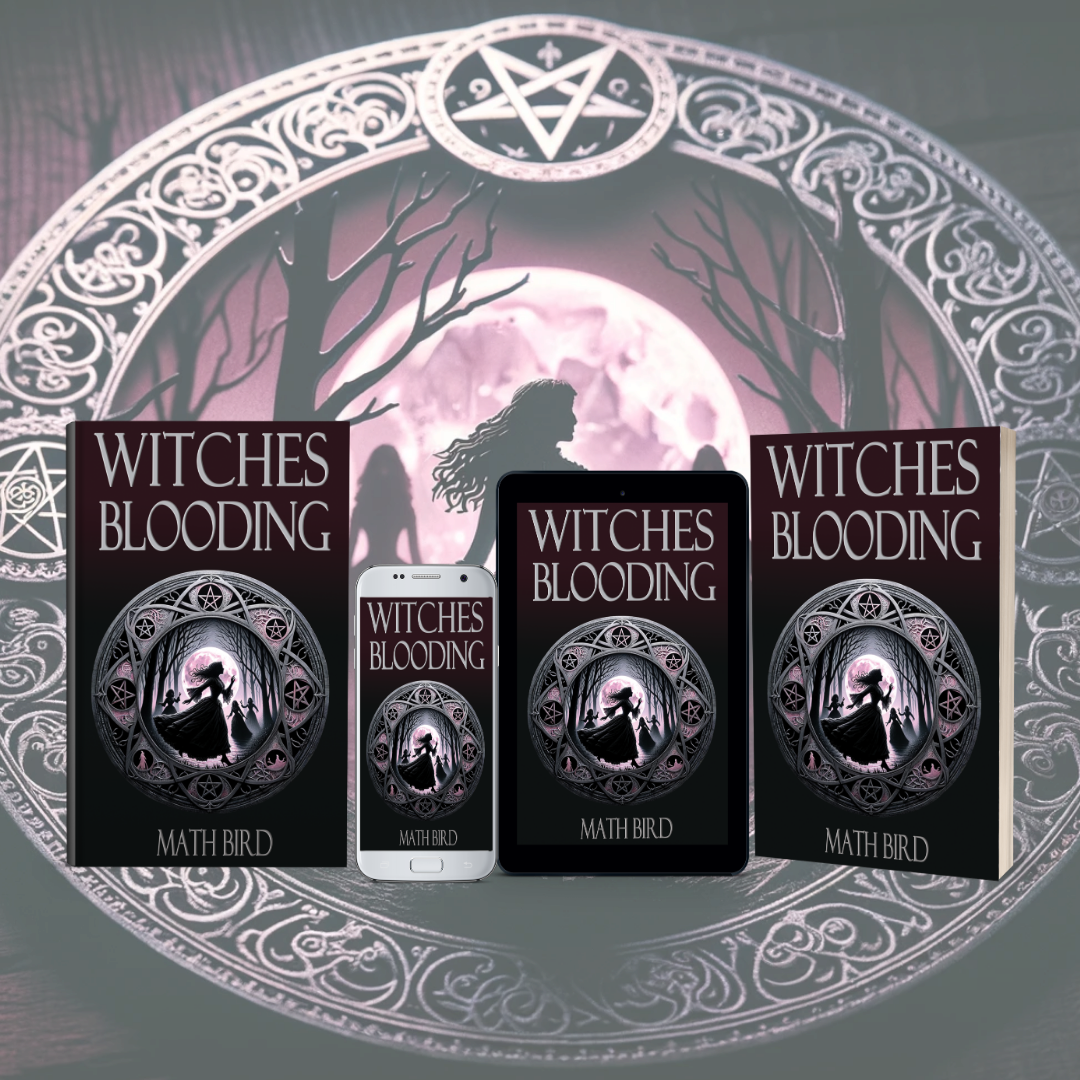Unbroken Covenants: How Witchcraft Survived the Centuries
A short article about the persistence of witchcraft practices and beliefs and its journey through 19th century America and its influence on my current novel in progress, 'WITCHES BLOODING.'
I guess if you asked most people to suggest a time in history when witchcraft, its practices and beliefs were at its most abundant and frenzied, many might think of the infamous witch trials and hysteria across Europe during the early and mid-17th Century. Perhaps the question might invoke images of the innocent and victimised strapped upon the ducking stool or Matthew Hopkins, the self-proclaimed Witchfinder General, terrorising those unfortunate enough to be accused across the English Countryside.
Further afield, across the Atlantic, the question might trigger thoughts of the Salem witch trials of 1692 in Massachusetts, arguably the most notorious episode in American witchcraft history.
But we’d be wrong to think that in the years to follow, Witchcraft practices and accusations faded and settled into a lull. As explored by Owen Davies’s excellent book ‘America Bewitched: The Story of Witchcraft After Salem.’
Many in the 18th Century turned their backs on the dark practices and superstitions of the past, embracing the ideals of Enlightenment and the spread of rational thinking. However, it’s important to note that in the subsequent years, especially the early, mid, and late 19th century, folk traditions, and superstitious practices and beliefs persisted throughout America, not just in rural areas but in the cities and also in the Wild West.
This resurgence of interest in the occult, folklore and the supernatural in 19th Century America provides the inspiration and backdrop to my latest novel in progress:
WITCHES BLOODING (Book 2 in the Witches Copse trilogy.)
Currently 40, 000 words in progress, the first half of WITCHES BLOODING tells the story of Eme Campbell and her husband, Dr Stuart Campbell, who, in 1896, emigrated to America from England to live with Stuart Campbell’s cousin Dr Charles Miller and his wife Clara in the American south in the fictitious area of Asherfield County. The story is one of betrayal and deception, a heartfelt tale centred around the practices of witchcraft and the occult, which I’ll provide more glimpses and discussions of in future articles.
Although a work of fiction, WITCHES BLOODING is influenced by real and recorded events, the practices and beliefs of the time and the people, institutions and organisations who were both its victims and perpetrators.
In 19th Century America, there are many reasons why the belief and practice of witchcraft captured the individual’s and public’s imagination. Here are some elements discovered as part of my research that have, to varying degrees, served as a catalyst:
Folklore and Antiquarian Societies: Many small groups and clubs were established throughout many counties to capture, record and discuss the folk history, folklore, and superstitions of the local area. One such society plays a pivotal role in my novel in progress, Witches Blooding.
Spiritualism: The mid-19th century witnessed the rise of Spiritualism, a movement centred around communication with the spirits of the dead. Mediums claimed to have the ability to contact the deceased, and séances became a popular pastime. While not directly related to witchcraft, Spiritualism blurred the lines between the living and the dead, reinforcing the belief in the supernatural.
Folk Magic and Herbalism: In rural America, folk magic and herbalism traditions persisted. These practices often involved using herbs, charms, and spells for various purposes, including healing and protection. While not explicitly labelled as witchcraft, these traditions drew from similar sources of ancient knowledge.
Witch Hunts: Although not as widespread as the witch trials of the 17th century, witch accusations and trials were more frequent than we tend to imagine. These cases often involved individuals accused of using witchcraft to harm their neighbours or livestock. The fear of witchcraft still lingered in some communities.
Economic Hardships: The late 19th century, like many centuries before and after, had more than its share of economic challenges, including The Panic of 1893 (a severe financial panic that lasted from May of 1893 to November 1893, with banks closing and businesses and manufacturers unable to open because they lacked cash to pay workers). In times of crisis, people often seek explanations for their misfortunes, and arguably, superstitions can resurface as a way to make sense of the world.
Media Sensationalism: Just as in the present day, newspapers and magazines played a significant role in fuelling people’s imaginations. Sensationalist reporting on alleged witchcraft cases garnered public attention and fuelled fear. Stories of witch trials and accusations often became headline news.
Social and Cultural Shifts: The late 19th century also saw significant social and cultural shifts. The growth of cities and industrialisation led to a disconnection from rural traditions and a loss of community cohesion. In such an environment, superstitions and fears can arguably become more pronounced.
Revival of Occult Literature: The late 19th century saw the publication of various books on the occult and witchcraft. Works like "Aradia, or the Gospel of the Witches", published in 1899 by the American folklorist Charles Leland, were both popular and controversial.
The areas highlighted above, directly or indirectly, have helped to shape and form the narrative, themes, and characters of Witches Blooding. I’ll write more about Witches Blooding in the coming months, its progress, narrative, characters, research, themes, and challenges. So, please consider subscribing to my newsletter to keep updated with the latest articles and podcasts.



